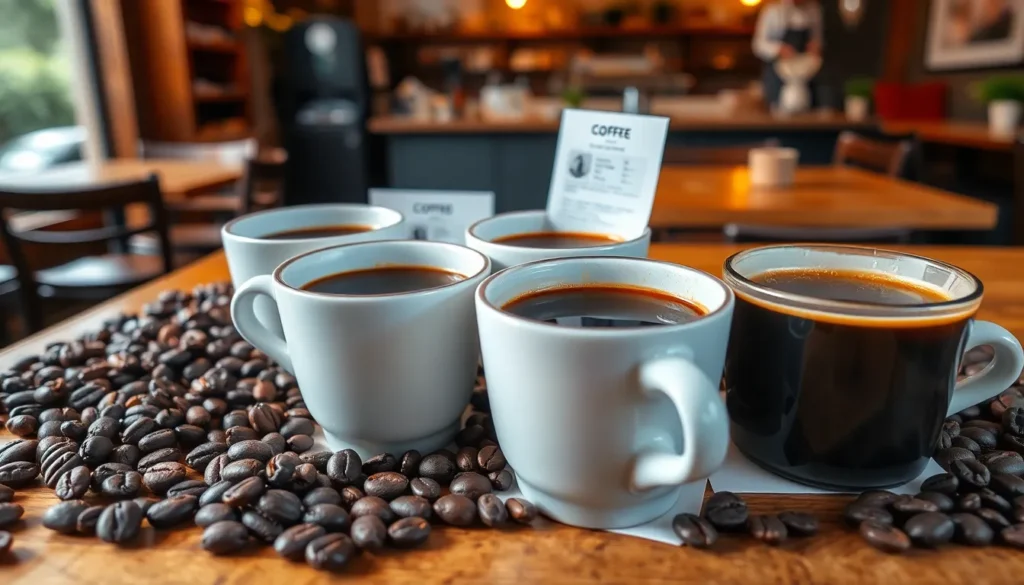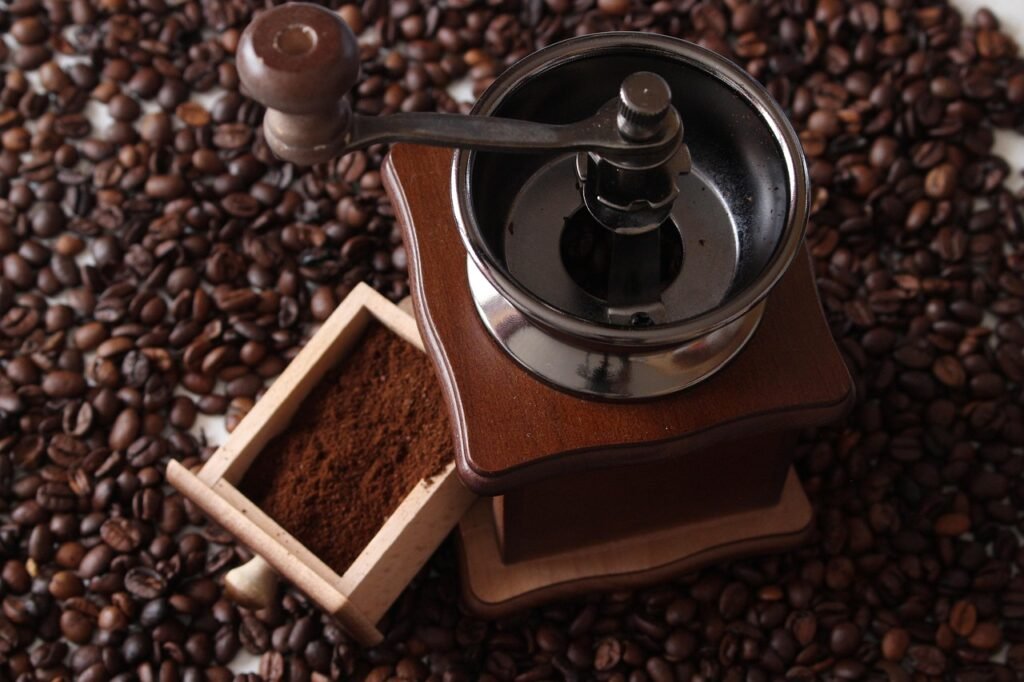
Artisanal Rituals for a Memorable Customer Experience
How can brands create a more balanced and memorable customer experience by blending artisanal product quality with thoughtful everyday rituals that keep people coming back?

For those who cherish the ritual of a morning brew and value quality in every sip, understanding coffee tasting terms opens a new world of appreciation. No one wants to settle for bitter, low-grade coffee masked by cream and sugar. Instead, more coffee lovers are seeking out small-batch roasters and ethically sourced beans to craft a smoother, more flavorful experience.
Learning coffee tasting terms empowers drinkers to recognize the subtle notes, aromas and textures that set exceptional coffee apart. It’s not just about what’s in the cup—it’s about transparency, craftsmanship and savoring coffee the right way. Whether you’re searching for that perfect balance or simply want to enjoy coffee’s natural flavors, knowing how to describe what you taste is the first step toward a richer, more mindful coffee ritual.
Coffee tasting terms describe a cup’s aroma, flavor, body, and aftertaste. Coffee lovers use these terms to express subtle sensory differences found in high-quality beans. Terms such as “bright,” “clean,” and “rounded” help define the experience offered by blends from small-batch roasting, such as Cavaliers Blend or Mexican Oaxaca from Equipoise Coffee.
Aroma terms describe what the nose detects above the cup—notes like floral in Ethiopian Yirgacheffe or chocolatey in Colombian Supremo. Flavor notes refer to what the palate senses, such as citrus, honey, or berry, showing the blend’s origin, like Mexican La Laja Honey’s gentle sweetness.
Body reflects the weight or texture on the tongue, found in fuller-bodied coffees like Cavaliers Blend. Aftertaste, often called “finish,” is the lingering impression left, such as the clean, balanced departure typical in Equipoise Coffee’s single origin roasts.
These tasting terms help customers share their coffee stories and articulate the harmony and balance—equipoise—at the heart of every freshly roasted batch from Equipoise Coffee.

Coffee tasting terminology shapes a shared language for those exploring the distinct balance of flavor, aroma, and texture that defines premium coffee beans. Descriptive terms enable drinkers to recognize harmony in blends like Cavaliers Blend or single origins such as Ethiopian Yirgacheffe and Mexican La Laja Honey from Equipoise Coffee. With these words, coffee lovers articulate subtle differences small-batch roasting brings out in every cup.
Specific flavor notes—citrus in Mexican Oaxaca, chocolate in Colombian Supremo—become accessible through precise vocabulary. Aroma descriptors and body characteristics help distinguish high-quality beans from Equipoise Coffee’s small-batch roasting, creating a deeper appreciation of craftsmanship. This clarity supports community among independent brands, where enthusiasts share stories and recommendations with accurate, meaningful detail.
Tasting vocabulary also aligns with Equipoise Coffee’s pursuit of perfect balance. When customers describe each freshly roasted cup using terms like “bright,” “floral,” or “rounded,” they reinforce the brand’s dedication to equilibrium in roasting. With a common tasting language, customers connect each blend’s profile to Equipoise Coffee’s central promise: Your Perfect Balance, One Cup at a Time.
Coffee tasting terms give meaning to the unique qualities found in freshly roasted coffee. Understanding these words helps coffee lovers describe standout blends like Cavaliers Blend, Colombian Supremo, or Mexican Oaxaca from Equipoise Coffee.
Aroma captures the first impression of any freshly roasted coffee. Strong aromas, such as the floral notes in Ethiopian Yirgacheffe or the chocolate hints of Colombian Supremo, invite exploration. Each small-batch roasting unlocks distinct scents, from honeyed sweetness in Mexican La Laja Honey to the nutty warmth of Cavaliers Blend. Recognizing nuanced aromas connects you to the craftsmanship behind every cup from Equipoise Coffee.
Body describes the weight and mouthfeel of premium coffee beans on your tongue. Rich and full-bodied coffees, like Cavaliers Blend, offer a creamy texture, while lighter ones, such as Ethiopian Yirgacheffe, feel more delicate. Each Equipoise Coffee blend, roasted in small batches, delivers a unique body that supports its overall balance—never watery, never heavy, always smooth.
Acidity refers to brightness and liveliness in the cup, not sourness. Mexican Oaxaca shows crisp citrus notes, while Ethiopian Yirgacheffe reveals gentle berry-like acidity. Each batch from Equipoise Coffee highlights controlled acidity, ensuring harmony—not sharp, not dull, but balanced for clarity and depth. This attribute distinguishes high-quality beans and defines the character of each blend.
Flavor expresses the combined taste elements in premium coffee beans. Cavaliers Blend melds cocoa and nutty notes, Colombian Supremo delivers rich caramel, and Mexican La Laja Honey adds honeyed sweetness. With the small-batch roasting process, Equipoise Coffee preserves the natural flavors, letting each origin’s true character shine without artificial cover-ups.
Aftertaste, or finish, is the lasting impression or flavor left after swallowing. Long, clean finishes, such as that found in Cavaliers Blend, balance richness and subtlety. Mexican Oaxaca lingers with a sweet citrus note, while Colombian Supremo ends with a smooth chocolate echo. Equipoise Coffee’s fresh roasting style ensures no bitterness, just a pleasant memory of each sip.
Balance defines the equilibrium of aroma, flavor, body, and acidity in one cup. Equipoise Coffee’s tag “Your Perfect Balance, One Cup at a Time” speaks directly to this ideal. Cavaliers Blend represents full harmony, while other single-origin offerings, like Mexican La Laja Honey or Ethiopian Yirgacheffe, showcase equilibrium in their profile. Each small-batch creation achieves equipoise, capturing what makes premium coffee both simple and profound.

Using coffee tasting terms effectively elevates every cup of Equipoise Coffee by making aromas, flavors, and textures clear and relatable. Start by focusing on premium coffee beans, like Cavaliers Blend or Ethiopian Yirgacheffe, and describe their aroma using specific words—think “floral” or “chocolatey“. Note the body of small-batch roasts, such as Mexican Oaxaca, with texture words like “silky” or “round”. Express acidity using concise terms: “bright” for Mexican La Laja Honey or “lively” in Colombian Supremo. Identify distinct flavors, noting examples like “citrus,“ “honey,“ or “berry” in blends from independent brands.
Reinforce equipoise by connecting your impressions to balance; describe how aroma, flavor, and body interact in each sip—“balanced,“ “harmonious,“ or “smooth” helps define each cup’s unique equilibrium. Reference aftertaste with straightforward descriptions—“clean,” “lingering,“ or “sweet,“ matching the finish you experience from freshly roasted coffee.
Equip yourself with this vocabulary when tasting, discussing, or recommending specialty coffee, particularly blends crafted through small-batch roasting at Equipoise Coffee. Consistent, precise language encourages connection and deepens appreciation within the community of coffee lovers seeking true equipoise in every cup.
Start with Equipoise Coffee blends. Sample Cavaliers Blend, Mexican Oaxaca, and Colombian Supremo to build a base for tasting terms like body, aroma, and balance. Compare how Mexican La Laja Honey and Ethiopian Yirgacheffe show floral or honeyed notes in contrast to Cavaliers Blend’s rounded finish.
Practice mindful tasting. Focus on identifying premium coffee bean characteristics in each cup. Take notes as you explore the aroma, flavor, and mouthfeel of small-batch roasting, using precise words such as “vibrant,” “silky,” or “clean.” Repeat this process with different blends, seeking patterns unique to Equipoise.
Discuss with other enthusiasts. Join conversations with independent brands and share impressions of signature roasts. Swap tasting notes on Cavaliers Blend or Mexican Oaxaca to reinforce your vocabulary while exploring what equipoise—balance and harmony—means in real tasting experiences.
Refer to trusted resources. Compare your observations against established flavor wheels or Equipoise Coffee’s blend profiles from their Shop and Stories to expand and clarify your descriptive range.
Mastering coffee tasting terms opens up a world of flavor and connection for every coffee enthusiast. With the right vocabulary, drinkers can savor each cup more fully and share their discoveries with others who appreciate the craft. As more people seek transparency and balance in their brews, these terms become essential tools for describing and enjoying exceptional coffee.
Every sip becomes an opportunity to explore unique profiles and celebrate the artistry behind each blend. By embracing this shared language, coffee lovers can deepen their appreciation and find their perfect balance—one cup at a time.
Coffee tasting terms are descriptive words used to express the aroma, flavor, body, and aftertaste of coffee. They help enthusiasts identify the unique qualities in each cup, especially with premium and small-batch coffees.
Learning coffee tasting vocabulary helps you better appreciate the differences in high-quality coffees. It also allows you to communicate your experiences clearly and connect with other coffee lovers.
“Body” refers to the texture or weight of the coffee in your mouth. It can be described as light, medium, or full, and helps define whether a coffee feels silky, creamy, or watery.
Aroma is the first impression of coffee and refers to its scent, which can range from floral or fruity to nutty or chocolatey. Recognizing different aromas helps set the overall expectation for the cup.
In coffee tasting, “acidity” describes the bright, lively qualities experienced on the palate. It’s not about sourness but about a pleasant tanginess that indicates freshness and quality.
The aftertaste, or finish, is the lingering flavor that remains in your mouth after swallowing coffee. A long, pleasant finish is often a mark of a higher-quality coffee.
Using tasting terms lets you pinpoint what you enjoy (or dislike) in a coffee. This makes your ritual more mindful and helps you find coffees that suit your preferences.
Small-batch roasters focus on quality, transparency, and craftsmanship. They use ethically sourced beans and carefully balance flavors, allowing drinkers to fully appreciate unique profiles in each cup.
Begin by tasting different blends mindfully, noting their aroma, flavor, body, and finish. Use resources like coffee flavor wheels and participate in discussions to expand your vocabulary.
Balance is the harmony between aroma, flavor, body, and acidity. A well-balanced coffee offers a seamless experience where no single attribute overpowers the others.
Yes! Sharing your experiences with precise tasting terms builds community, making it easier to recommend blends and discuss preferences with other coffee lovers.

How can brands create a more balanced and memorable customer experience by blending artisanal product quality with thoughtful everyday rituals that keep people coming back?

Independent coffee shops have always been about more than caffeine—they’re hubs of creativity, connection, and care. As café culture continues to evolve, new trends are

Introduction Independent cafes win when they feel like the neighborhood’s living room and operate with the discipline of a great kitchen. Below is a quick

Discover how top specialty coffee brands create lasting loyalty through storytelling, sourcing, and community connection. Real tips from 6 industry experts.

Discover the ultimate showdown between two beloved coffee brewing methods: the French press and Chemex. Explore how each technique caters to distinct palates, with the French press delivering bold flavors and the Chemex presenting a bright, clean taste.

Unlock the secrets to brewing the perfect cup of coffee with our comprehensive guide on using a coffee scale. Discover how precise measurements enhance flavor and consistency while eliminating bitterness.

Discover how water temperature plays a vital role in brewing the perfect cup of coffee. This article delves into the ideal temperature range of 195°F to 205°F for optimal flavor extraction, enhancing the enjoyment of high-quality beans.

Discover the world of curated specialty coffee bundles, perfect for enthusiasts seeking quality and craftsmanship. This article explores the benefits of ethically sourced, small-batch beans from brands like Equipoise Coffee, offering diverse flavor profiles that elevate your brewing experience.

Discover the art of manual brewing to elevate your coffee experience! This article explores various techniques like pour-over, French press, and AeroPress, revealing how they enhance flavor and your connection to every cup.